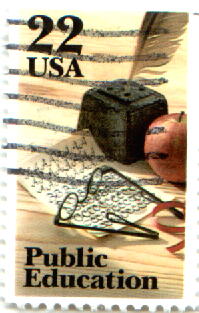Government's Role In The Economy
While consumers and producers obviously make most decisions that mold the economy, government activities have at least four powerful effects on the U.S. economy:
Direct Services
 Each level of government provides direct services. The postal
system, for example, is a federal system serving the entire
nation, as is the large military establishment. By contrast, the
construction and maintenance of most highways is the
responsibility of individual state governments. The public
education systems are primarily paid for by state, county or city
governments. In general, police and fire protection are the
responsibilities of local government.
Each level of government provides direct services. The postal
system, for example, is a federal system serving the entire
nation, as is the large military establishment. By contrast, the
construction and maintenance of most highways is the
responsibility of individual state governments. The public
education systems are primarily paid for by state, county or city
governments. In general, police and fire protection are the
responsibilities of local government.
Regulation and Control
The government regulates and controls private enterprise in many ways in order to ensure that business serves the best interests of the people as a whole. Regulation is usually considered necessary in areas where private enterprise has been granted a monopoly, such as in electric or local telephone service, or in other areas where there is limited competition, as with the railroads. Public policy permits such companies to make reasonable profits, but limits their ability to raise prices "unfairly" (as defined by the regulators) because the public depends on their services. Often control is exercised to protect the public, for example, when the Food and Drug Administration bans harmful drugs, or requires standards of quality in food. In other industries, government sets guidelines to ensure fair competition without using direct control.In the 1970s and 1980s, Americans became increasingly divided on the issue of government regulation of the economy. Proponents argued that government regulation was needed to protect consumers, workers and the environment; critics insisted that regulations interfered with free enterprise, increased the costs of doing business and thus contributed to inflation. These factors, coupled with rapid technological change, prompted President Jimmy Carter to reduce regulation of the transportation and communication industries in the 1970s. Also, at this time, federal agencies were encouraged to be more flexible in applying regulations.
In the 1980s, President Ronald Reagan's legislative agenda, based largely on his belief that an unfettered private sector would assure economic prosperity and growth, pushed deregulation efforts still further. Regulations or the implementation of regulations designed to protect workers, consumers and the environment were cut back. In addition, during the Reagan administration, a voluntary approach was taken to some regulations. For example, the Consumer Product Safety Commission adopted a voluntary compliance program, allowing individual companies to design their own remedies for targeted safety programs.
In the early 1990s, the drive to push still further deregulation in a broad, across-the-board manner appeared to have slowed considerably. Although proponents of deregulation continued to stress its benefits, criticism of how deregulation had actually worked in practice mounted. Airline deregulation, for example, initially fostered increased competition that lowered the cost of flying. But, within a few years a wave of airline mergers and consolidations shrank the number of airlines, and critics argued that the benefits of deregulation had either disappeared or become minor. On the other hand, deregulation of telecommunications unquestionably brought increased competition to certain parts of the telephone services industry.
At the same time, by the 1990s the number of federal government officials occupied with regulatory matters was on the increase again after having been cut back during the 1980s. According to an analysis of regulatory institution staffing by the Center for the Study of American Business, in 1992 the number of federal government regulatory officials was expected to be around 122,000, which surpassed the previous record set in 1980. The study particularly noted increases in staffing at agencies concerned with such activities as protection of the environment and regulation of the financial sector. These were areas where increasing numbers of Americans appeared to be troubled by disturbing events or trends.
Stabilization and Growth
Branches of government, including Congress and such entities as the Federal Reserve System, attempt to control the extremes of boom and bust, and of inflation and depression, by adjusting tax rates, the money supply and the use of credit. They can also affect the economy by changing the amount of public spending by the government itself. Normally, the aim is a balanced federal budget. But since 1960 a deficit has prevailed in the federal accounts in every year except 1969, and it has generally widened, reaching a high of some $200 thousand-million in the mid-1980s, before dropping back again.
Direct assistance
The government provides many kinds of help to businesses and individuals. For example, tariffs permit certain products to remain relatively free from foreign competition; imports are sometimes taxed or limited by volume so that American products can better compete with foreign goods. Government also provides aid to farmers by subsidizing prices they receive for their crops.In quite a different area, government supports individuals who cannot adequately care for themselves by making grants to low-income parents with dependent children, by providing medical care for the aged and indigent, and through social insurance programs that assist the unemployed and retirees. Government also supplies relief for the poor and help for the disabled.
